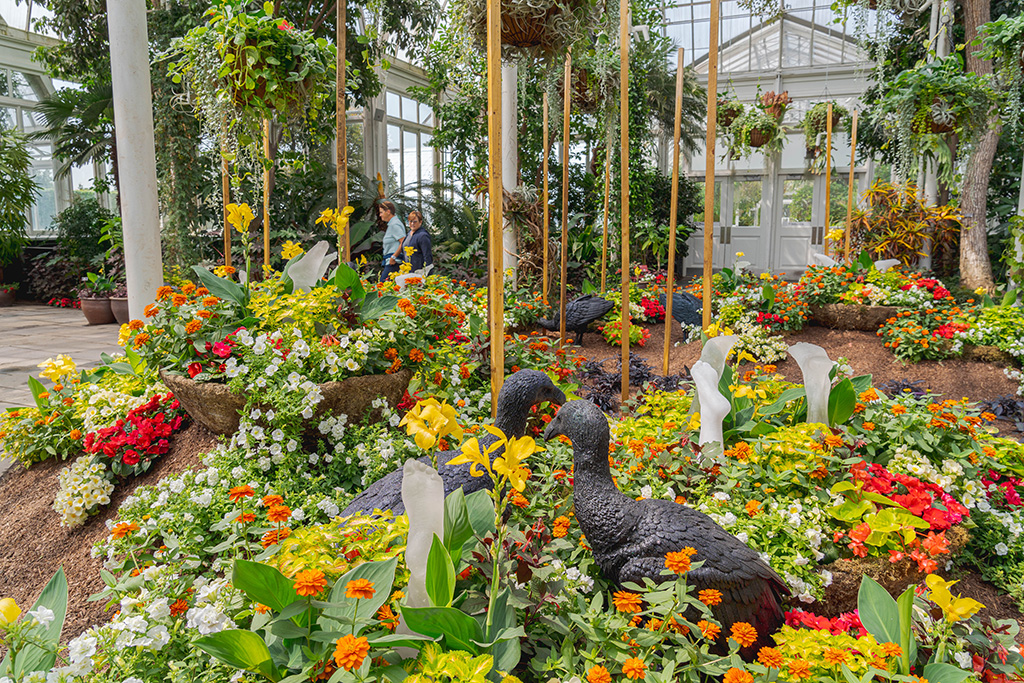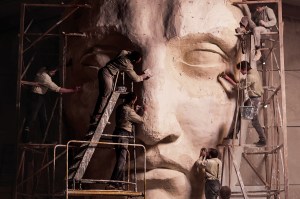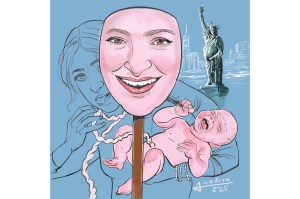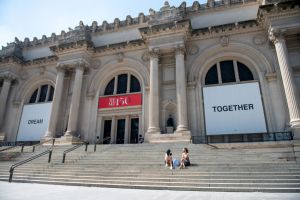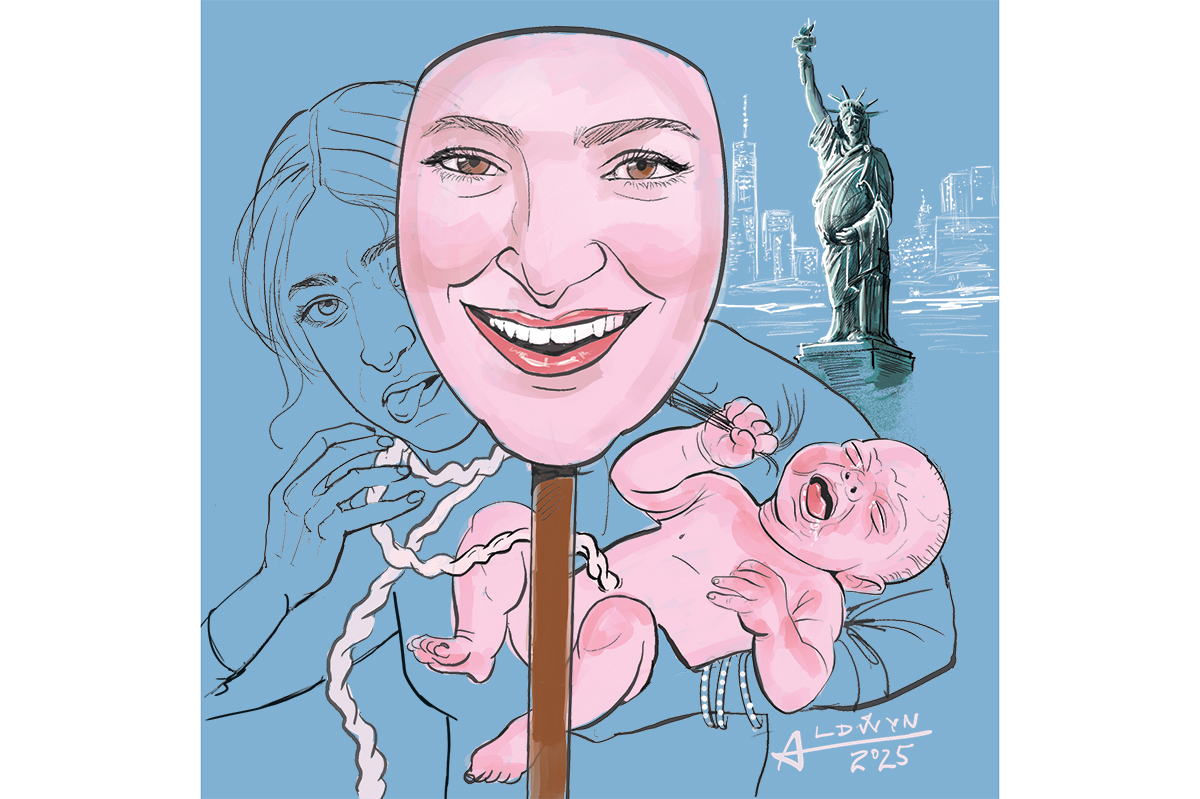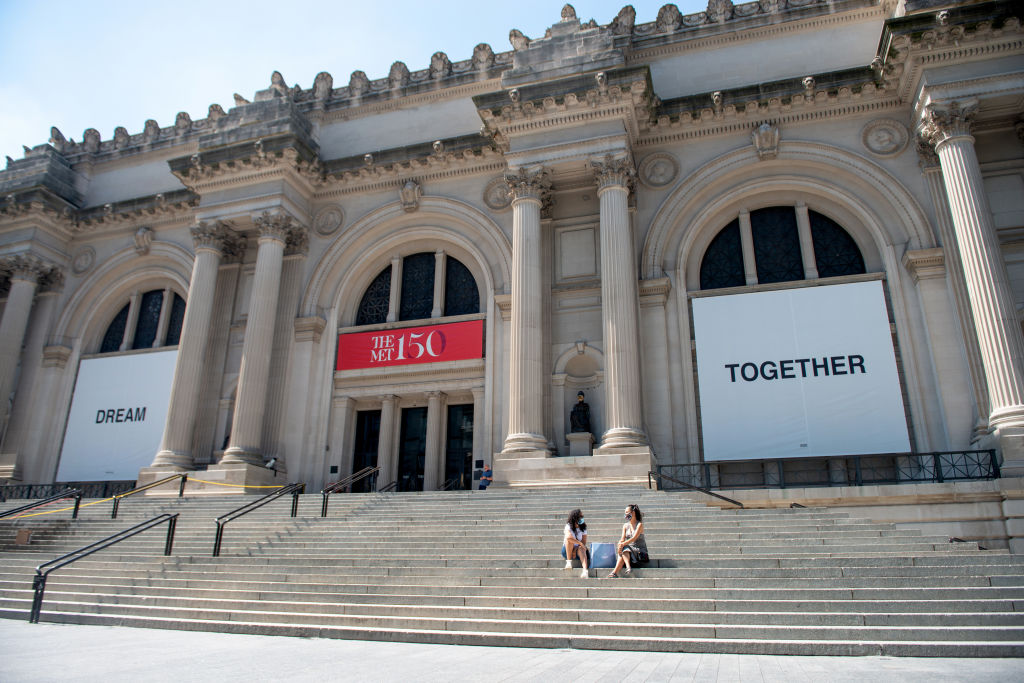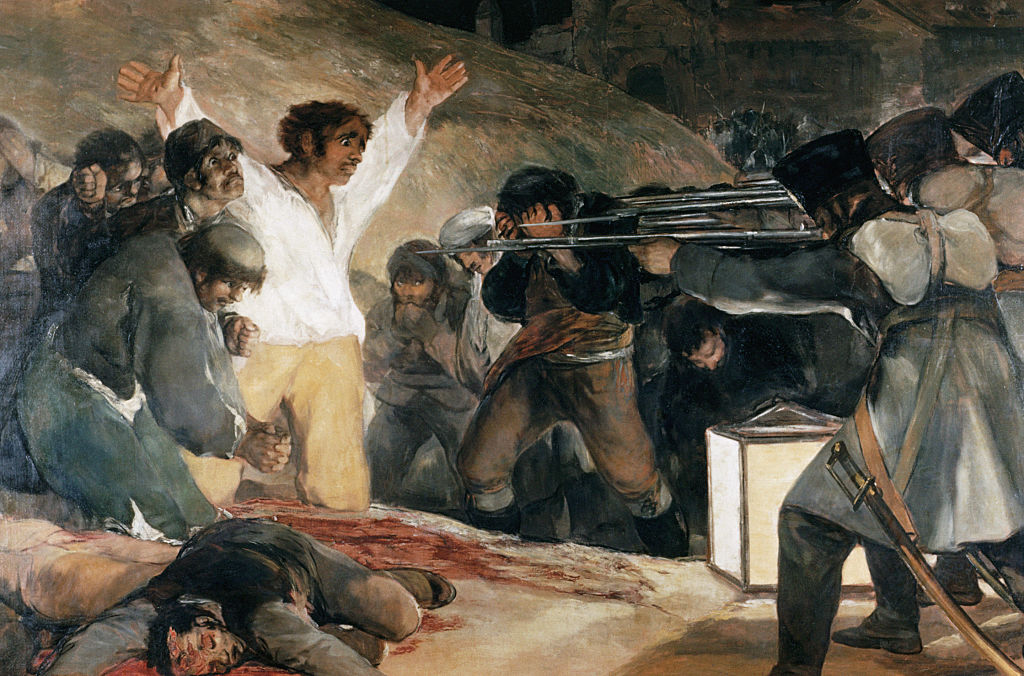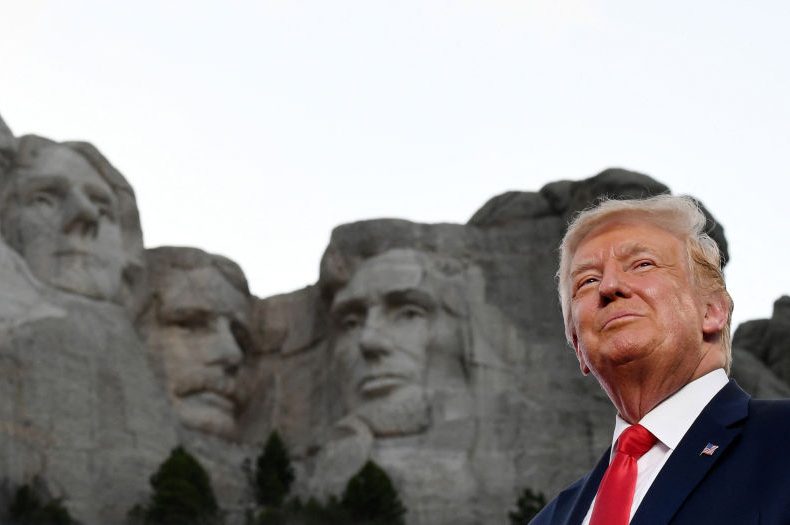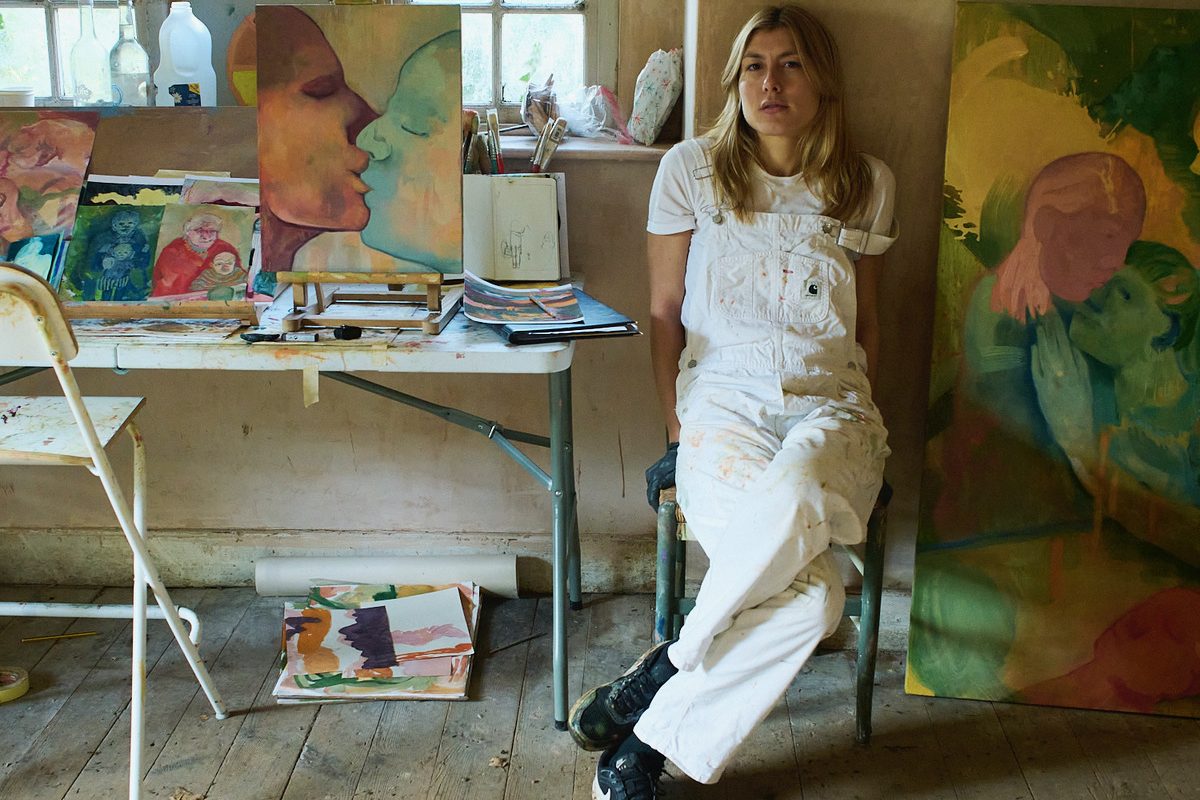Nestled in the New York Botanical Gardens in the Bronx are a series of vultures, who lurk, grotesque and yet strangely beautiful, among the greenery.
The birds number in their hundreds, are larger than life and glint with glitter in the sun. They aren’t real, of course, but part of Jamaican artist Ebony G. Patterson’s expansive show, …things come to thrive… in the shedding… in the molting…
Works in the exhibition range from cast-glass leaves and body parts — including severed feet — peeking out from the plants to the imposing sculpture “… fester …”, a ten-foot wall covered with more than 1,500 red gloves on one side and tassels, beads and tapestry on the other. At its core, the show is about decay: decay that eventually reveals growth, and hopefully, beauty.
The Spectator spoke to Paterson over Zoom from her home in Chicago (she divides her time between America and Kingston, Jamaica). “I don’t want to be the one to determine what people feel,” says the artist, who is thoughtful and warm and wears oversized square black glasses, with cropped bleached hair and a nose ring. “I’m wary of being an artist with a message — when I make something, it’s just evidence of my thinking. I am allowing people to engage with my thoughts, and they are going to have thoughts about my thoughts.”
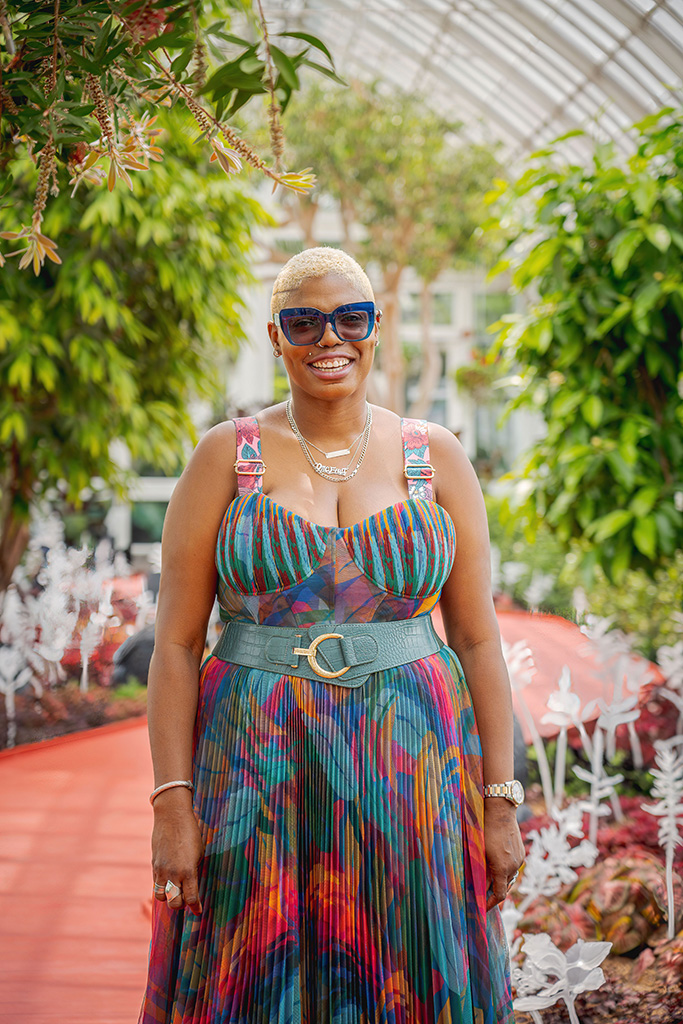
What drew you to art as a child?
When I was eight, I declared to my parents I would want to be an artist. My dad was a small-business owner who came from deep rural poverty, so the notion of being an artist was just the furthest thing from their imagination. But they were supportive; they did nurture and foster my curiosity.
What is the most surprising thing you have learned about the Botanical Gardens?
Plants are borrowed in the same way from institutions in the same way that works are borrowed [in art galleries and museums] — it blew my mind. “We borrowed this tree”: how do you mean you borrowed a tree?
In …things come to thrive… in the shedding… in the molting…, your sculptural pieces interact with the plants around them. How has the show changed since it opened earlier this summer?
Of course, the show has continued to evolve, because the plants have evolved — it doesn’t look like the same thing at all. Which is what I expected. But to see how drastic the change is… everything has gotten richer, thicker, taller! [By the fall] it will have changed in ways that a lot of people who are used to coming to gardens will not expect — plants are going to die. I have asked them to maintain some of those elements when plants do die.
You want to remind people that a garden is as much about death as life…
Yes. So much of my work at its core explores a lot of conversations around death, funerary and mourning.
Which makes sense, as one of the most popular, and photographed, parts of your exhibition are the vultures, a bird aligned with death and decay.
They always get a really bad rap. But they do reference death due to part of their function — they eat the dead. There’s an ecological importance to that. What would happen if we didn’t have the vultures to do the work? The vulture is also a metaphor. What would happen if we didn’t have the people doing the work we didn’t want to do, the work that we didn’t see as being humble or lowly work?
In the Conservatory, you have fashioned extinct plants, which now only exist as specimens in the NYBG’s Herbarium, from glass. Tell us more about the piece.
I took some time looking at extinct species — most of them came from California, or came from islands, mostly Hawaii and parts of the Caribbean. The islands are what are most vulnerable at this moment due to climate change. So, I took seven of them that I thought could be interesting to reproduce in glass, kind of as a metaphor of this notion of sitting with a ghost. Something is gone, something is extinct — it is a kind of ghost.
What about the glass body parts?
They represent all the bodies that relate to exploitation. People don’t think about these things when they come to a garden — it’s a site of leisure and pleasure. But botanical gardens are also legacies of colonialism — the plants become trophies in the same way when we visit a history museum [where artifacts were traditionally viewed as trophies]. What does it mean to look beneath all of it?
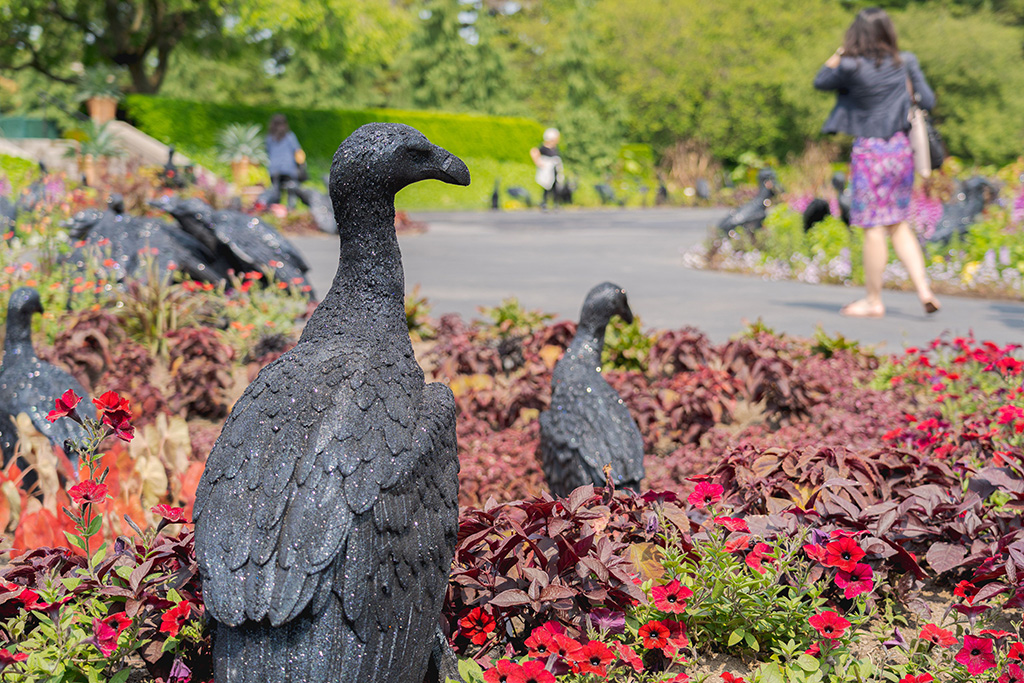
You have a quote in your studio that reads: “Gardens are evidence of the rape of the world.”
Gardens are evidence of violence. The botanical gardens, there are so many of these plants that came from other places, they came on top of the ship in the special glass houses that were built to transport these plants as plunder happened in discovering these worlds. As plants were transported on top, people were being transported in the bottom. These plants are evidence of rape, evidence of plunder, evidence of exploitation, evidence of violence.
Should there be conversations about returning plants to their native countries, in the same way that history museums are having conversations about plundered artifacts?
How do we return a breadfruit tree? It’s easier for us to think about it around a singular object, but to think about plants in that way, that’s a little difficult. I think that there’s something gardens can do: [they can] raise questions about their histories.
Which is exactly what your art is doing: asking difficult questions.
I was thinking about these white retired women who would come to the garden, because they had space, time and access. And what would that mean to disrupt a moment for them when they came to look at the peonies? It’s a luxury and a leisure that is not necessarily afforded to a lot of people who live in proximity to the gardens.
What do you think can be done?
You’re in a city like New York where green space is limited. [We need to ask]: what does it mean for the largest of the gardens in New York City to have the highest ticket price? All [of the gardens] have work to do in that regard: thinking [about] who are you serving and what are you presenting and what does it mean to create access for people?
Can you unpick the thought process around your sculptural work “…fester…”?
“…fester…” is thinking about the landscape as a body. What we see on the front is all these skins: the skin of the landscape and skinning of the landscape. It’s a continued meditation. Thirty-six tapestries are hung like skins with glass plants and a couple of gilded spines. Then you walk around the back end and there’s this volume of hands, sort of red lace hands [made from gloves]. The landscape, as beautiful as it is, it is soaked, it is drenched in bodies — and when one looks at the underside there is evidence in the roots, in the infrastructure. Nothing ever exists in isolation. “…fester…”is thinking about a wound.
…things come to thrive… in the shedding… in the molting… is on until October 22 at the New York Botanical Gardens in the Bronx.



